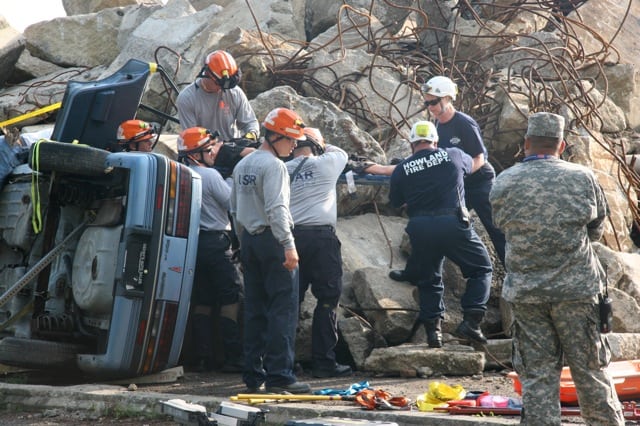
The drill involved a tornado that struck the fictional town of Ravenna Falls inside the former Ravenna Arsenal and simulated the way it would be in real life. A structural collapse simulator destroyed buildings and a replicated public infrastructure, creating a huge pile of rubble and steel. Actors played the role of victims and were rescued by response personnel. Other scenarios included establishing a drinkable water supply after the disaster, setting up a mortuary to identify and accommodate the dead, handling the discovery of a huge meth lab in a populated area, and a wide area search in which badly injured victims were scattered far from the scene of the initial disaster.
The main emphasis of disaster response planning is that all emergencies are first engaged at the local level and then supported by additional outside resources as needed. One of the reasons for such a massive exercise was due to the lessons learned from Hurricane Katrina. Real-life responses will have the local responders essentially in control, with further resources called in incrementally as needed.
Penn Care president Shawn Bryant and sales representative Grayson Root were in attendance to witness this large-scale event. Many lessons can be learned from mock disaster drills, and the staff at Penn Care regularly attends these exercises in order to keep up on new methods and technologies used in disaster response and homeland security.
Click here for pictures of the event.


